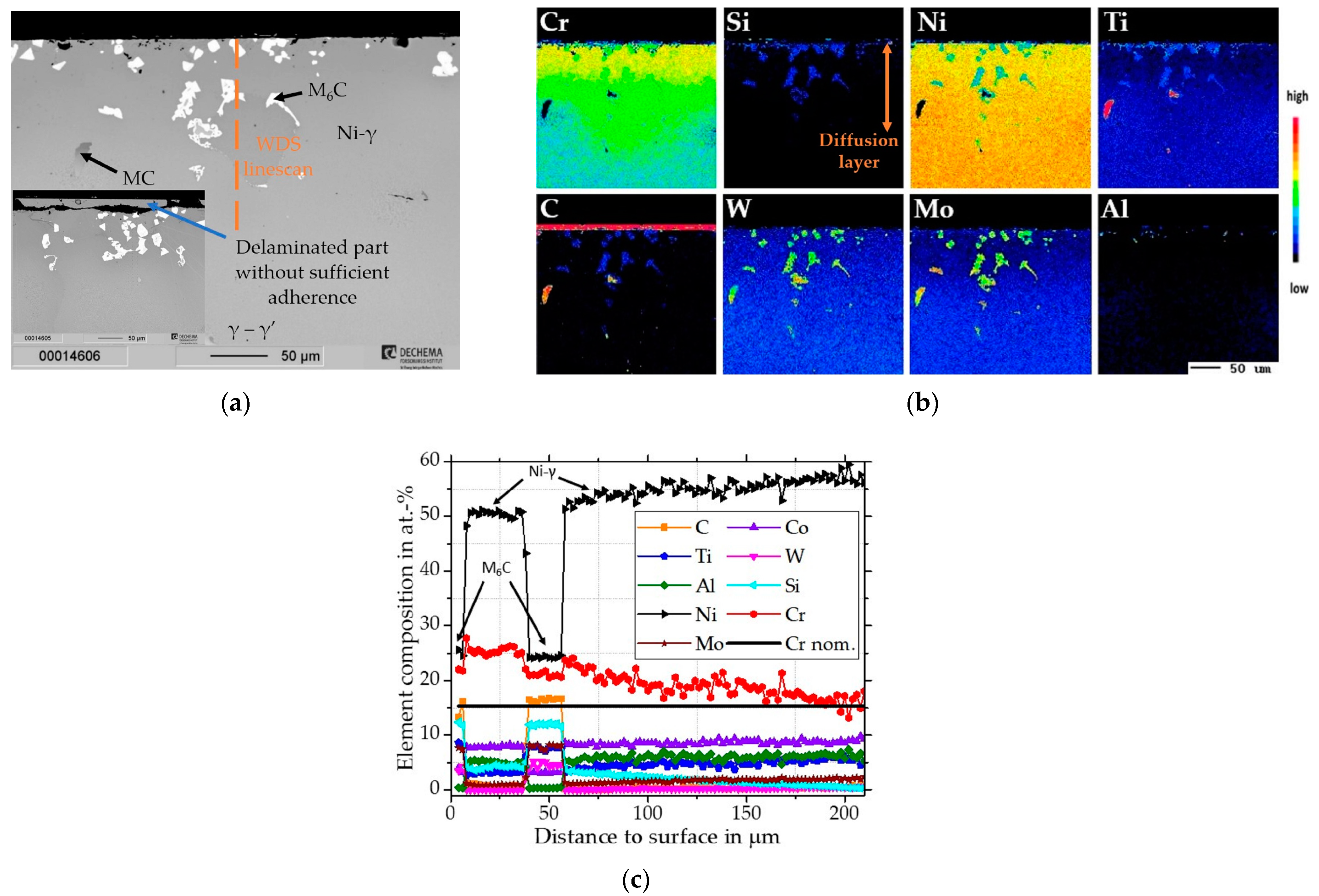M. Kerbstadt, E.M.H. White, M.C. Galetz
Materials 16 (2023), 7480; DOI: 10.3390/ma16237480

Surface enrichment in Al, Si, and Cr can greatly improve high temperature oxidation resistance of many alloys. Al, Si, and Cr coatings are commonly applied via simple slurries or more complex pack cementation processes. Due to the high melting point of Cr, the deposition of Cr-based diffusion coatings by the slurry technique has proved challenging, and to date, Cr has mostly been applied by pack cementation. Here, a novel Cr-Si coating process via the slurry technique is described which has been developed and then demonstrated on two Ni-based superalloys, Rene 80 and Inconel 740H. The addition of Si to the slurry lowers the melting point via a Cr-Si eutectic and enables the formation of a liquid phase during heat treatment. Through this Cr-Si slurry coating process diffusion layers enriched by Cr and Si of about 150 µm were achieved. Oxidation behavior was studied through isothermal exposures at 900 °C for 1000 h in lab air. Uncoated Rene 80 and IN740H both showed formation of a Ti-containing Cr2O3 scale below a thin TiO2 top layer. Underneath the external scale a zone of internally oxidized Al grew over the exposure time and reduced the load-bearing cross-section progressively. In comparison, the Cr/Si-coated samples did not show internal Al oxidation, but a slow-growing Si-rich oxide film underneath the external Cr2O3 scale. This subscale represents an additional oxygen diffusion barrier. Thus, the weight gain during exposure for the coated samples was significantly lower than for the uncoated materials.